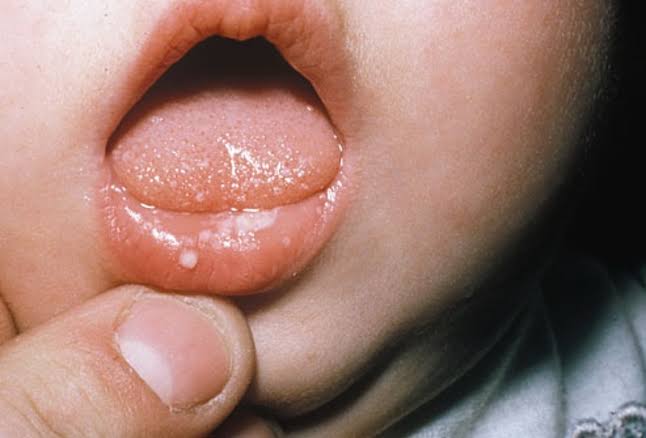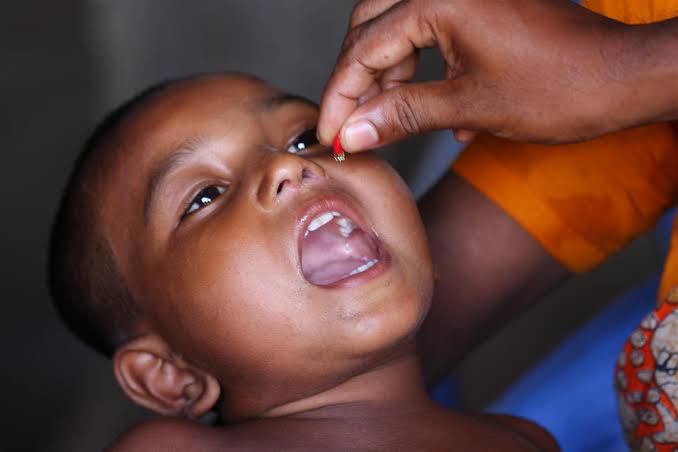Bronchiolitis in Pediatrics is a common respiratory tract infection below 2 years. The peak incidence is observed in children around 6 months and that months. too during winter and early spring months
Causative Organisms of Bronchiolitis in pediatrics
In majority of cases the causative organism is respiratory syncytial virus. Other causative organisms are influenza virus, para influenza virus and adenovirus.
Bronchiolitis in Pediatrics is passed through adult family member suffering from viral respiratory tract infection. Adults do not get severe symptoms like small children because of relatively larger diameter of bronchioles in adults.
Pathophysiology
Bronchiolar inflammation causes bronchiolar obstruction due to edema of bronchial mucosa and collection or mucus and cellular debris. This results in narrowing of bronchiolar lumen and increased resistance to air passage.
Since the bronchiolar lumen is still nar- rower during expiration, resistance to causing ball valve type of obstruction, air trapping and over inflation of lungs. air passage is more during expiration causing ball valve type of obstruction,air trapping and over infaltion of lungs.In advanced stage obstruction becomes total and collapse of alveoli occurs be- cause of absorption of air.
The pathophysiology is discussed in detail as it is the viral infection which causes bronchiolar obstruction leading to respiratory distress and other symptoms. Since it is a viral infection the progress of the disease cannot be checked by drugs. Management of such cases by General Practitioner is difficult because except for frequent observation there is hardly anything which he can do at his clinic. However role of General Practitioners in managing bronchiolitis is very important because all children suffering from bronchiolitis do not require hospitalization.
With frequent observation of the child at his clinic for progress of the disease he can manage the cases of bronchiolitis which do not require urgent hospitalization. Introduction of inhaler, space haler and nebulization has drastically cut down the rate of hospitalization in these patients.
Symptoms of Bronchiolitis in pediatrics
The disease starts with symptoms of upper respiratory tract infection like running of nose, sneezing and mild to moderate fever. This may be associated with refusal of feeds and irritability. These symptoms are followed by dry cough and breathlessness; occasionally the child may have vomiting during the bout of coughing. Breathlessness may lead to excessive irritability and difficulty in sucking. The symptoms may disappear within few days to one week.
Signs of Bronchiolitis in pediatrics
1. Use of accessory muscles of res- piration to overcome decreased supply of oxygen due to bronchi- olar obstruction- these include
(1) Flaring of alae nasi; (ii) intercos- tal and subcostal retraction. Dis- tension of abdomen and excessive movement of abdominal muscles due to subcostal retraction are often mistaken by parents as the disease of abdomen like abdominal colic and household remedies are tried for it.
2. Tachypnea: Respiratory rate is in- creased.
3. Auscultation of Respiratory system: Widespread fine rales may be heard at the end of inspiration and in early expiration, The expiratory phase of breathing is prolonged, it is associated with Rhonchi. In severe cases air entry may be diminished up to the great extent.
4. Liver and spleen may be palpable due to depression of diaphragm.
5. Severe cases may present with toxic look, severe air hunger and cyanosis.
Investigations
If the progress of disease is gradual the General Practitioner gets the chance to investigate the child and to differentiate this illness from other diseases. If the progress of disease is very fast it is better to hospitalize the child for investigations as well as for treatment.
1. W.B.C. count may be normal, if these are a significant eosinophilia keep in mind bronchial asthma as differential diagnosis.
2. X-ray chest: (i) Hyperinflation of lung; (ii) Scattered areas of con- solidation are found in some cases. X-ray chest will rule out the other causes of fever, cough, breath- lessness like bronchopneumonia, pneumonia.
Treatment of Bronchiolitis in pediatrics
Principles of management: It is self-limiting disease but constant watch is required on (i) Respiratory rate; (ii) Degree of bronchospasm; (iii) Hydration of the child.
Indications for Hospitalization
1. Respiratory rate above 60 with flaring of alae nasi, subcostal and intercostal retraction
2. Development of cyanosis
3. Dehydration of more than grade II
4. Bronchiolitis associated with other diseases like gastroenteritis, congenital heart disease The hospital management includes (i) Cold humidified oxygen; (ii) Intra venous fluids.
Management of Bronchiolitis in Pediatricswhich are not hospitalized: Supply of cold humidified oxygen and maintenance of hydration by IV fluids, these are the only two things required for management of bronchiolitis. Since these two things cannot be arranged for the OPD patients, drugs like bronchodilator, antibiotic are often used by many General Practitioners and pediatricians for managing cases of bronchiolitis on OPD basis.
Theoretically it may not be correct but following drugs are used to treat the cases of bronchiolitis.
1. Bronchodilator Theophylline: Load- ing dose- 7 mg/kg/dose IV or IM maintenance dose- 20 mg/kg/day in 4 divided doses- reduce the dose to 10 mg/kg/day in 4 divided doses once the necessary effect is obtained. Though this therapy used by senior practitioners it is almost outdated.
Oral preparation containing Salbu- tamol are commonly used.
Syr. Salbutamol (Asthalin) 0.2 mg/ kg/day in 3 divided doses
1.Nebulizer: Salbutamol (Asthalin) Respule is used in nebulizer. Wait for 10 minutes if bronchospasm is decreased patient can be managed on OPD basis. If there is no relief it is better to hospitalize the patient. Nebulization has brought down the hospitalization of such patients drastically.
2. Antibiotic: Though theoretically not required it is commonly used to take care of secondary infection. Syr. Ampicillin 50 mg/kg/day in 4 divided doses for 5 to 7 days. Other antibiotic which are also used- Roxithromycin, Erythrocin, Amoxicillin, Cephalosporin, Cefix- ime, and Cefpodoxime.
3. Corticosteroid: Used only in case this is not responding to other measures. Dose of Dexamethasone 0.2 mg/kg/day in 3 divided doses- the dose is reduced gradually before stopping the drug. Steroid nebulization: Budecort respules.
Recovery is usually complete without leaving any signs of respiratory system illness. Repeated attacks are uncommon.
NOTE- Do not follow any treatment And medicine provided here ,please consult nearest hospital and talk to your doctor.This artical is only for knowledge purpose.
Team-Dailyayurvedic
All credit – Milind S. Shejwal
Thank you








